Current members of the Biomolecular spectroscopy & dynamics Cluster (BioC)
The members of BioC are at the Universities of Glasgow (GU) and Strathclyde (SU)
- Adrian Lapthorn (GU)
- Alastair Wark (SU)
- Brian Smith (GU)
- Cheryl Woolhead (GU)
- Christopher Syme (GU)
- Duncan Graham (SU)
- Hans Senn (GU)
- Karen Faulds (SU)
- Klaas Wynne (GU)
- Malcolm Kadodwala (GU)
- Maxim Fedorov (SU)
- Neil Hunt (SU)
- Richard Cogdell (GU)
- Sharon Kelly (GU)
- Stephen Sproules (GU)
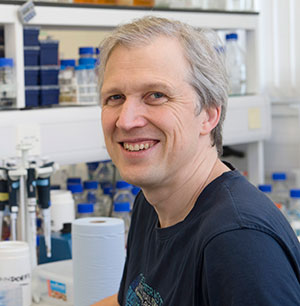
Adrian Lapthorn
My research interests are in using the technique of protein crystallography to elucidate protein structure with an aim to answering important questions on protein function and mechanism. I also have a specific interest in protein-protein interactions. Protein Structure and Function; Enzymes of the Shikimate pathway; Structure aided drug discovery; Protein Crystallography; Plant Glutathione S-transferases.
See also:
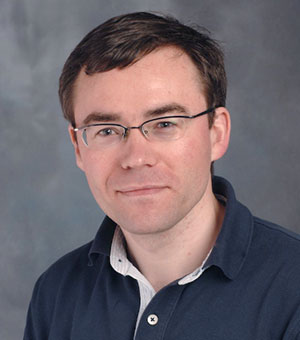
Alastair Wark
Research focus is the development of surface plasmon-enhanced techniques for the detection and tracking of biomolecular interactions and bioimaging applications. Activities are based around the synthesis and functionalisation of novel nanomaterials alongside the development of techniques capable of optically imaging and tracking single nanoparticles and molecules. The advantages of these materials for nanometrology and bioanalytical science is that optical measurements can be performed in real-time at high spatial resolution. As well as developing robust methodologies for ultrasensitive bioaffinity detection at target concentrations approaching just a few molecules, we are also exploring the use of multimodal imaging techniques for monitoring nanoparticle-cellular interactions to tackle research challenges requiring dynamic measurements in complex biological environments. Consequently, my research is highly multidisciplinary and I have enjoyed successfully collaborating with researchers from across the biology, physics, engineering and medicine research fields.
See also:
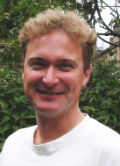
Brian O. Smith
My group uses NMR spectroscopy to study the structures and functions of proteins and nucleic acids and small molecules in a variety of systems. High-resolution molecular structures are normally determined in vitro, but I was part of the team that solved the first structure of a protein inside living cells.
Some current research topics
The biophysics and application of natural surfactant proteins. We solved the structures of the natural surfactants ranaspumin-2 and latherin in solution, on which we are developing by investigating how their properties can be exploited for cell engineering and biotechnology applications.
Characterization of nematode fatty acid binding proteins. We have recently determined the structures of two fatty acid binding proteins from nematode parasites and built on our previous work on the nematode polyprotein antigens (NPAs). One motivation for this work is to characterize potential targets for the development of novel antihelminthic compounds. In this regard, our discovery that the NPA subunit expressed in E. coli co-purifies with a ligand that binds more tightly than the ligands present in the protein purified from nematodes, suggests that it may be possible to find drug-like molecules that interfere with the function of the protein in vivo.
Ultraviolet light perception by plants. We are trying to answer two important questions that remain despite the determination of the plant UV-B photoreceptor, UVR8’s three-dimensional structure by X-ray crystallography. Photo-activation of normally dimeric UVR8 reversibly produces a long lived monomeric form, presumably through the disruption of ionic interactions that hold the dimer together. We hope to determine the currently unknown chemical nature of the photo-activated form and characterize the conformation and flexibility of UVR8’s COP1 interacting C-terminal region by NMR spectroscopy.
See also:
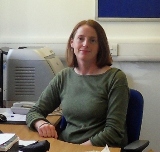
Cheryl Woolhead
We are interested in membrane protein folding and targeting. We study the properties of nascent membrane proteins from their synthesis within the ribosome, through their targeting to the membrane by auxiliary factors and finally their integration into the lipid bilayer. We are using various biochemical and biophysical techniques to analyse the mechanisms and the components involved in these pathways.
See also:
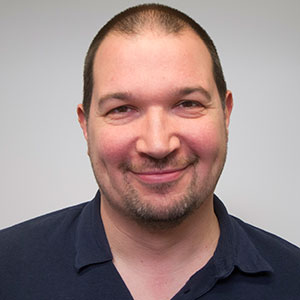
Christopher D. Syme
My research interests include the development of novel spectroscopic and imaging techniques, with a particular emphasis on Raman spectroscopy and associated techniques such as Raman optical activity (ROA), SERRS and CARS microscopy. Raman-based techniques yield a wealth of chemical and structural information without the need for labelling or modification of the sample. Raman data can be obtained non-destructively enabling studies on a vast array of samples and substrates including live cells and tissues. ROA is exquisitely sensitive to molecular chirality and is a powerful probe of biomolecular structure. Many of the most important molecules in living systems are chiral, such as amino acids, peptides and proteins, nucleic acids (DNA and RNA), viral capsids and amyloid fibrillar species that are implicated in a range of neurodegenerative illnesses such as Alzheimer’s disease. Recent advances in technology have paved the way for the rapid development of increasingly powerful Raman-based techniques, such as coherent anti-Stokes Raman scattering (CARS) microscopy. CARS boosts the Raman signal such that images may be collected in a fraction of the time, enabling high-resolution video-rate imaging, and opening upon a wide range of new possibilities.
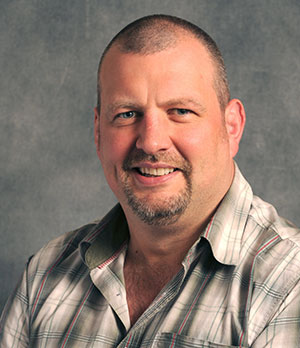
Duncan Graham
Graham’s portfolio within the Centre for Molecular Nanometrology at Strathclyde focuses on the application and study of surface enhanced Raman scattering (SERS) for analysis of biomolecules and biological systems. This involves the creation of a range of functionalised metallic nanoparticles which can be used for a variety of different purposes including the diagnosis of disease and also the treatment of disease. This includes the chemical manipulation of the appropriate surface molecules and labels required to turn these metal nanoparticles into functioning nanosensors capable of detecting single molecules in complex environments using SERS. In addition, the mounting of therapeutic agents onto these nanoparticles has resulted in significantly increased performance of the drugs when tested against particular disease states.
See also:
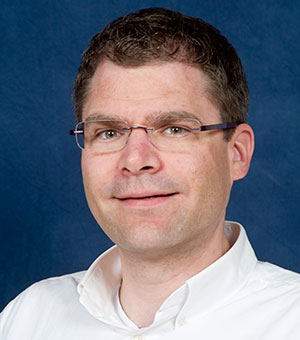
Hans Senn
The computational chemistry and simulations group led by Hans Senn uses combined "molecular mechanics" (MM) and quantum-mechanical (QM) computer simulations to get insight into chemical reactions, in particular catalytic reactions. Combined QM/MM methods describe only the part of the molecule where the reaction is taking place with an expensive QM method and use MM for the remainder. They are especially suited for enzyme reactions, where the reaction is confined to the "active site". Enzymes are involved in virtually all chemical transformations in living organisms and computer simulations provide a detailed picture at the atomic and molecular level of how the catalyst works. One obtains information about the reaction rates and the overall energetics of the processes as well as about the properties of the molecules involved in the reaction, including the catalysts themselves, which helps their identification in experiments.
See also:
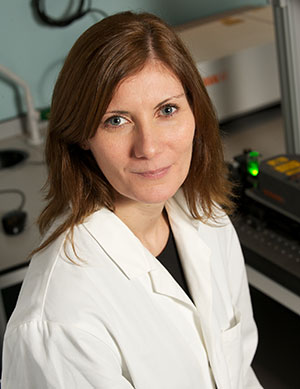
Karen Faulds
Research focuses on using surface enhanced Raman scattering (SERS) to create new approaches to bioanalysis for use in the life and clinical sciences. SERS is a spectroscopic technique that offers significant advantages over other established techniques such as fluorescence and her research has focused on highlighting the advantages, creating new examples of increased capability in life science applications and interacting with end users to shape future step changes in research. Her research centres around using the inherent sensitivity of SERS for the detection of target DNA or proteins using signal amplification methods to enhance the signal rather than using target amplification methods such as PCR. Her work has focussed on exploiting the sensitivity of SERS for quantitative analysis of biomolecules as well as exploiting one of the key advantages of SERS, the ability to analyse multiple analytes in one sample. This allows more information to be gained per analysis as well as giving information about complex systems that are intrinsically difficult to measure. The emphasis of her research is on biological and clinical applications.
A recent example was the successfully detection of bacterial infections including the multiplex detection of meningitis pathogens where the quantification of three pathogens within a multiplex was successfully achieved by SERS for the first time, Chemical Science 2014, 5(3), 1030. The quantification of analytes by SERS has long been an issue, and is still very challenging to achieve for even one analyte within a matrix, therefore being able to quantify all three components within a multiplex, clinical sample was a step forward for SERS. This work has generated much interest within the scientific community but also amongst the general public. The work was showcased on the BBC.
See also:

Klaas Wynne - Ultrafast Chemical Physics
In the ultrafast chemical physics group, we are interested in the structure and dynamics of liquids and solutions. We study peptides, proteins, and other biomolecules but consider them as amorphous blobs that behave much like liquids. We are especially interested in phase behaviour such as supercooling of liquids, folding transitions in peptides, nucleation of crystals from solution, and liquid-liquid and liquid-crystalline transitions. These phenomena are studied using femtosecond optical Kerr-effect spectroscopy, terahertz time-domain spectroscopy, infrared spectroscopy, and fluorescence (lifetime) imaging microscopy.
See also:
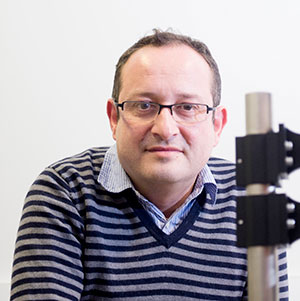
Malcolm Kadodwala
Research in the Kadodwala group has has three themes: (a) spectroscopic investigations of the electronic properties of nanostructured materials on surfaces; (b) the development of new electron-based chirally sensitive spectroscopic techniques; (c) the development of novel chiroptical spectroscopic probes. Kadodwala currently holds an MRC discipline-hopping grant (Ref. G0902256), which is directly related to this proposal. The “hop” has enabled him to focus entirely on research and acquiring new skills in the life sciences.
See also:

Maxim Fedorov
Maxim Fedorov is SUPA2 Professor of Physics and Life Sciences. He is an expert in computational chemical physics and molecular biophysics. His research interests focus on modelling solvent mediated molecular interactions in macromolecules and nanobjects. Maxim Fedorov is also Director of the West of Scotland Academia-Industry Supercomputer Centre.
See also:
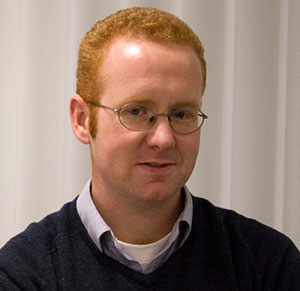
Neil Hunt
Neil is a Reader working in the Biomolecular and Chemical Physics group, part of the Nanoscience division. Research in Neil’s Multidimensional Spectroscopy Group concentrates on applying ultrafast two dimensional infrared (2D-IR) spectroscopy to the study of biological systems. Recently, he obtained a high profile ERC Starting Investigator Grant to extend this technique to allow the observation of real-time changes in molecular structure during reactions. Neil also collaborates closely with the Central Laser Facility at the STFC Rutherford Appleton Laboratory on developing 2D-IR and transient 2D-IR methods for studying biological systems.
See also:
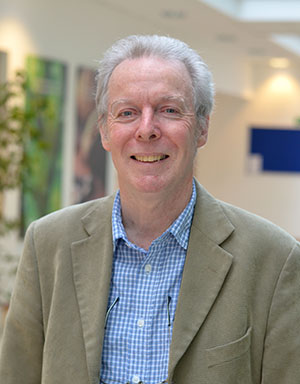
Richard Cogdell
Since the early 1970's Richard Cogdell has been involved in research on bacterial photosynthesis. His work has increasingly focused on the early events of photosynthesis - light harvesting and energy transfer - and the structure / function of the pigment-protein complexes involved in these processes. A wide variety of experimental approaches have been used, including protein crystallography, fs and ps spectroscopy, single molecule spectroscopy and molecular biology. However, it was protein crystallography that in 1995 allowed Richard's research group - in collaboration with two other groups - to determine the three dimensional structure of a light-harvesting complex from the purple bacterium, Rhodopseudomas acidophila. Since then Richard has been collaborating with both experimental physicists and chemists, and several theoreticians to capitalise on this structural information to understand the full molecular details of the energy transfer reactions that take place during light harvesting.
He is now increasingly concentrating on using the information gained from his structural and functional studies on the purple bacterial pigment-protein complexes to devise ways of using solar energy to produce fuels. To this end, he has founded the Glasgow Solar Fuels Initiative. This work involves a wide range of collaborations both within the University and in the USA, Japan, Germany, Poland and Italy.
See also:
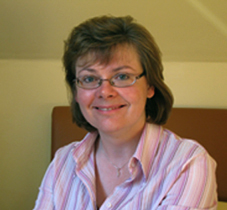
Sharon M. Kelly
Manager of Protein and Nucleic Acid Characterisation Facility. In order to understand complex biological and biochemical processes it is necessary to characterise the molecular structure and interactions of the components involved. The facility provides a wide variety of biophysical techniques (Circular Dichroism, Linear Dichroism, Fluorescence, UV-VIS, FTIR, Isothermal Calorimetry and Surface Plasmon Resonance) to support collaborative research involving biomolecular characterisation.
See also:
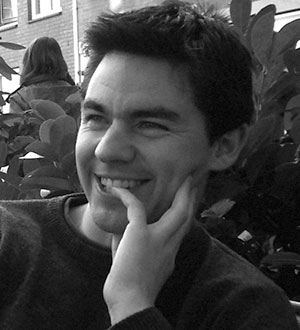
Stephen Sproules
Electron Paramagnetic Resonance Spectroscopy Group. EPR is a technology for studying the bonds and structures of chemical and biological materials, such as molecular mechanisms in membranes and proteins. Basically, the technique elucidates how molecules move, react and interact with one another. Observing the dynamical structure of proteins in liquid water is the key to understanding their function in living organisms. However, the dynamics of protein motion and conformal changes are extremely challenging to observe due to the small size, with the functional bending dynamics occurring at very high speeds. Compared with NMR which is widely used to determine structures of biomolecules in solution, EPR has advantages in sensitivity of absolute number of spins, spatial resolution for spin-spin distance measurements and time resolution of dynamical structure change. Since many biomolecules don’t have unpaired spins, EPR studies in biomolecules require the introduction of a site-directed spin label (SDSL) – an EPR-active nitroxide side chain at selected locations in proteins. Short-lived free radicals in generated in many biochemical processes can be identified using a nitrone or nitrosyl ‘spin trap’, leading to greater insight into function and mechanism of various biomolecules.
See also:




